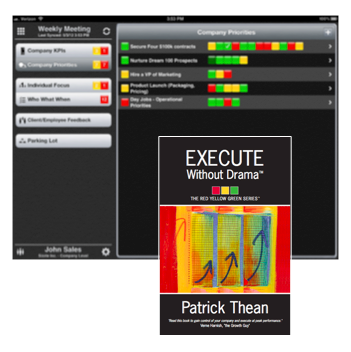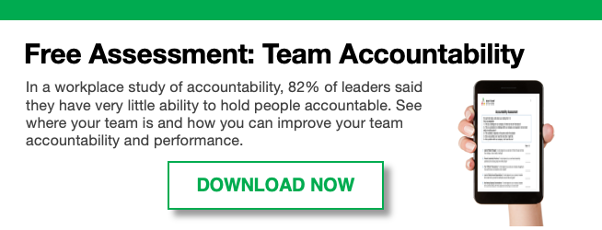Recently, I worked with a client who was a whiz at quarterly planning,  but was falling short on execution. The team was capable, the culture was positive, they just weren’t getting things done. The end of the quarter would roll around, and that beautiful plan was still sitting unfinished. After much discussion, we decided to up the CEO’s Execution Leadership skills.
but was falling short on execution. The team was capable, the culture was positive, they just weren’t getting things done. The end of the quarter would roll around, and that beautiful plan was still sitting unfinished. After much discussion, we decided to up the CEO’s Execution Leadership skills.
Execution Leadership
1. Don’t be afraid to hold your team accountable. You’re the boss. Whacking heads is not always in order, however. Instead, first approach team members in a positive way to drive outcomes. For example, connect with your Core Values and use them. If one of your Core Values is “Find a Better Way” and someone isn’t embracing a new process, use that in your discussion.
2. Set clear expectations. A strong planning session where clear priorities and success criteria are identified is imperative to good execution. Does each person on the team know what to do and what will be considered success and failure? As a leader, you cannot hold people accountable unless they have a clear picture of success upfront.
3. Be predictable. If a team member doesn’t status his priorities or misses a deadline, your reaction should be consistent and predictable. He should expect an outcome or a reaction from you. Don’t let weak execution go without an acknowledgement from you. Focus on solving issues and moving things forward, not on whacking heads.
4. Give your team the tools they need to be successful. Whether you are using Rhythm or a flip chart on your conference room wall, make sure you have a visible quarterly plan dashboard to use as an execution tool. This gives one place to focus everyone’s attention on execution. It also gives you a platform to discuss struggling priorities in a drama-free way.
5. Stick to a routine. Establish strong Weekly Adjustment Meeting habits using your dashboard. The team will know that regardless of vacation schedules or busy seasons, the Weekly Adjustment Meeting will happen without fail.
6. Record and review Action Items in your Weekly Adjustment Meetings. A best practice for strong execution is for each person to record 3-4 Action Items under each of their Individual Priorities. Review overdue Action Items in your Weekly Meeting and resolve them. If Action Items get assigned during the Weekly Meeting, record them on the spot and review the next week if they are not completed. Hold the team accountable to the details.
7. Lead by example. If you are using a tool like Rhythm, don’t expect your team to complete their Weekly Meeting Prep and address overdue Action Items if you don’t. Comment, collaborate and engage with your team regularly in Rhythm and they will follow suit.
Great execution comes from great execution leadership, and great execution leadership comes from consistent and intentional effort on the part of the leader. Look back through the list above and pick one or two items you want to intentionally improve on this month. Your team will thank you.
Want more information on Team Accountability? Check out these additional resources:
The Power of Systems and People: Accountable Leaders and Teams leadership development program to improve team performance.
Take Our Team Accountability Assessment to see how your team stacks up.
Why You Need a Peak Performance Plan for Your A-Players
Leadership Accountability Definition in Management
Level 5 Leadership - How to be a Level 5 Leader with examples
Team Accountability Begins with Personal Accountability
How top CEOs Close the Strategy Execution Gap
Follow Up: The Key To Leadership Development
Building Team Accountability: Job Scorecards
10 Signs of an Accountable Culture [Infographic]
Growing Team Accountability in Your Organization
5 Steps to Having an Accountability Discussion [Video]
Learn more about accountable leaders and teams.




